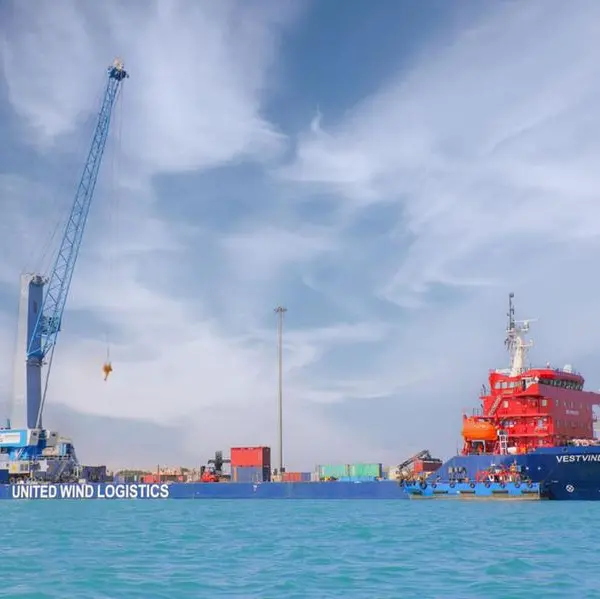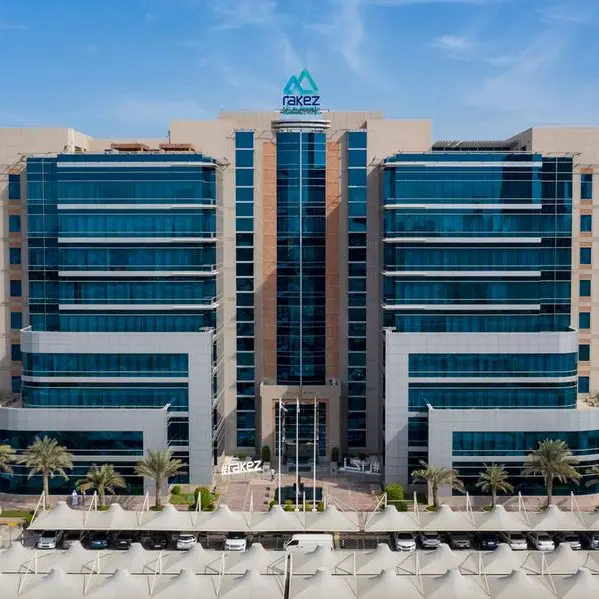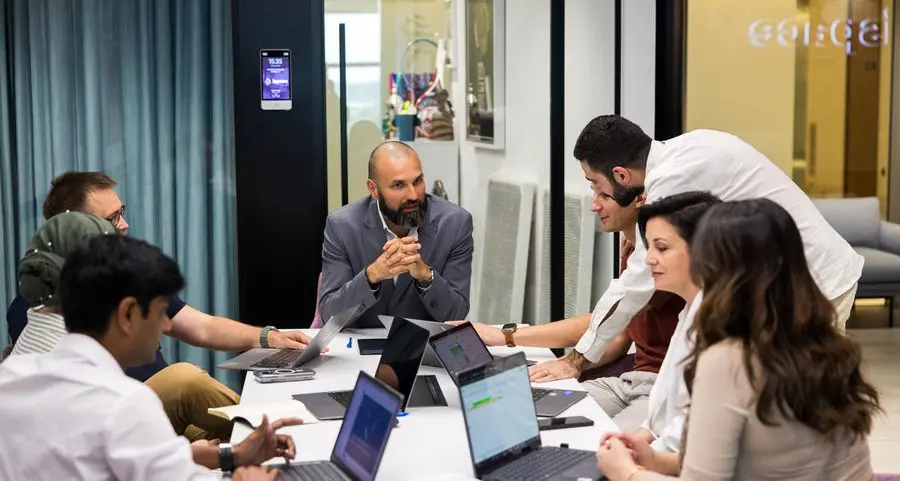PHOTO
The Middle East's 16 largest centres of economic growth could have $367bn of GDP at risk from a series of threats over the next decade, according to new research for Lloyd's, the specialist insurance market.
A new study published today, the Lloyd's City Risk Index, presents the first ever analysis of economic output at risk (GDP@Risk) in 301 major cities from 18 manmade and natural threats over a ten-year period.
Based on original research by the Cambridge Centre for Risk Studies at the University of Cambridge Judge Business School, the Index finds that a total of $4.6 trillion of projected GDP is at risk from manmade and natural disasters in these cities around the world.
Lloyd's has produced this Index to help increase the understanding of, and shape the world's response to, the shifting risk landscape. The Index, which will be updated every two years, is aimed at stimulating further discussions between insurers, governments and businesses on the need to improve resilience, mitigate risk and protect infrastructure.
In the Middle East, the Index found the cities of Abu Dhabi, Ahvaz, Amman, Baghdad, Beirut,
Damascus, Doha, Dubai, Esfahan, Jeddah, Jerusalem, Karaj, Kermanshah, Kuwait City, Mashhad, Riyadh, Sana'a, Shiraz, Tabriz, Tehran, and Qom together will generate an average annual GDP of $2.4 trillion in the coming decade. However, 15% of this economic growth is at risk from the combination of 18 manmade and natural threats.
Across the region, the largest GDP exposures are to market crash$143.3bn, earthquake $85.17bn, human pandemic $41.40bn, sovereign default$30.16bn, and terrorism $25.68bn.
Tehran has the most GDP at risk with $64bn exposed, more than half of this ($34.5bn) is from earthquake as the city lies on several major fault lines. It has the second largest amount of GDP at risk from earthquake behind Lima.
Riyadh has the most GDP at risk from human pandemic in the region at $5.16bn reflecting the flow of almost two million pilgrims who make Haj each year.
In the financial trading hubs of Dubai and Abu Dhabi, market crash is the greatest exposure accounting for almost half of the GDP at risk.
Globally, the Index identifies three important emerging trends in the global risk landscape:
The findings show the need for governments and businesses to work together to build more resilient infrastructure and institutions. How quickly a city recovers after a catastrophe is a key component of the total risk, and the impact of events is mitigated by rapid access to capital to help restore the economy.
Inga Beale, CEO of Lloyd's said:
"Lloyd's City Risk Index highlights the economic exposure of 301 major cities across the world. Governments and businesses, together with insurers, must work together to ensure that this exposure - and the potential for losses - is reduced.
"Insurers, governments, businesses and communities need to think about how they can improve the resilience of infrastructure and institutions. Insurance is part of the solution.
"Insurers must continue to innovate; ensure their products are relevant in this rapidly changing risk landscape, offer customers the protection they need and, as a result, contribute to a more resilient international community."
Mark Cooper, Lloyd's Middle East General Representative, said:
"Lloyd's City Risk Index highlights the economic exposure of the major cities in the Middle East and the significant levels of GDP at risk from both manmade and natural threats.
"We are all too familiar with some of the natural threats and have robust contingency plans in place; however, we should be increasingly aware of a number of manmade and emerging threats highlighted in the report and the importance of risk management to mitigate the potential economic impact. The study shows that a market crash is the greatest economic vulnerability and this is also true in the Middle East, where $143bn could be at stake.
"Whilst insurance is part of the solution to improve resilience to these threats; and the industry continues to innovate with specialist (re)insurance coverage; government, business and communities must work together to create a more resilient response to a major event."
-Ends-
About Lloyd's City Risk Index
Lloyd's City Risk Index 2015-2025 is a product of a research partnership between Lloyd's and the Cambridge Centre for Risk Studies at the University of Cambridge Judge Business School.
To view the Index, visit lloyds.com/cityriskindex
To download the Executive summary, www.lloyds.com/ExecutiveSummaryCityRiskIndex
What is GDP@Risk?
When a catastrophic event, such as an earthquake, a pandemic or a financial crisis, hits a city, it reduces its economic output. The loss of economic output, relative to the economic output that would have been expected, is the GDP@Risk from an event. Lloyd's City Risk Index 2015-2025 takes the first five years of lost economic output as the standard measure of GDP@Risk from an event.
Cities are at risk from multiple threats. Lloyd's City Risk Index considers 18 of them: cyber-attack, drought, earthquake, flood, freeze, heatwave, pandemic, market crash, nuclear accident, oil price shock, plant epidemic, power outage, solar storm, sovereign default, terrorism, tsunami, volcano and windstorm.
We estimate the likelihood of each city being affected by different magnitudes of events between 2015 and 2025. These likelihoods vary from city to city depending on their locations and risk characteristics, but all of these events are rare and the probability of a city being impacted by any particular event scenario in the ten year period may be only a few percent.
We estimate the GDP@Risk from each event, were it to occur, for each city. How quickly a city recovers after a catastrophe is a key component of the total risk. The impact of events is mitigated by rapid access to capital to help restore the economy afterwards.
Summing all the expected losses from the different threats and their representative scenarios that could occur in each of the years from 2015 to 2025 gives the Total GDP@Risk for the city from all threats. This is a probability-weighted expected loss to the economy of that city from all threats.
For further information, please contact:
Elie Azzi
HAVAS PR MIDDLE EAST
Senior communications executive
+971 (0)56-156-3627
elie.azzi@havasprme.com
About Lloyd's
Lloyd's is the world's only specialist insurance and reinsurance market that offers a unique concentration of expertise and talent, backed by strong financial ratings and international licences. It is often the first to insure new, unusual or complex risks, providing innovative insurance solutions for local, cross border and global risks. Its strength lies in the diversity and expertise of the brokers and managing agents working at Lloyd's, supported by capital from across the world. In 2015, more than 90 syndicates are underwriting insurance and reinsurance at Lloyd's, covering all lines of business from more than 200 countries and territories worldwide. Lloyd's is regulated by the Prudential Regulatory Authority and Financial Conduct Authority.
About Cambridge Centre for Risk Studies
Cambridge Centre for Risk Studies is a multidisciplinary centre of excellence for the study of the management of economic and societal risks, and is an independent research centre at the University of Cambridge Judge Business School. The Centre's focus is in the analysis, assessment, and mitigation of global vulnerabilities for the advancement of business risk managers, individual decision makers and policy strategists. The research programme pursued by the Centre explores catastrophic systemic risk and interconnectivity in the economy. The Centre is supported by the business community as well as the academic research councils and focuses on research that is highly application-oriented.
© Press Release 2015











